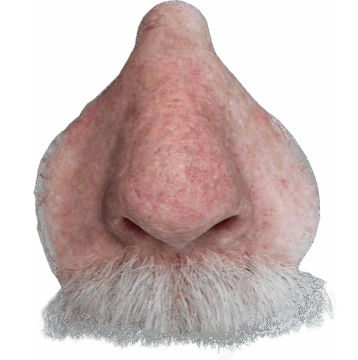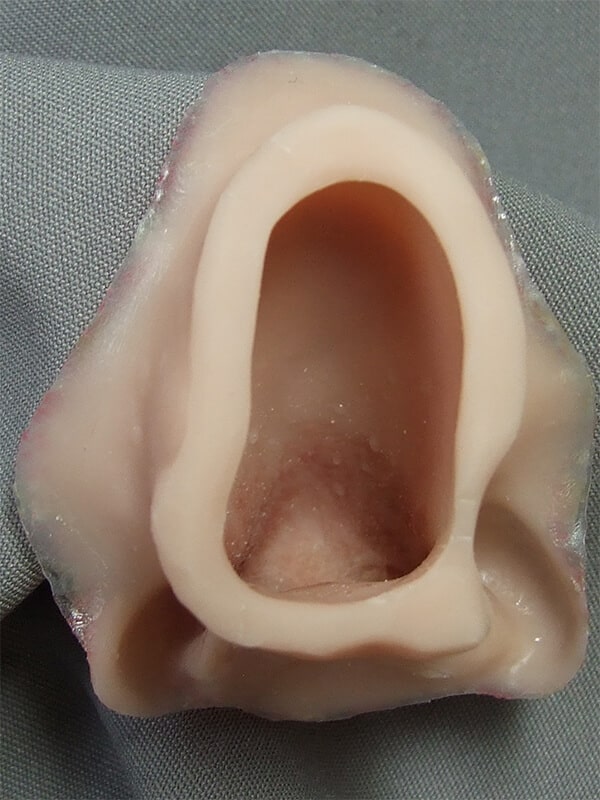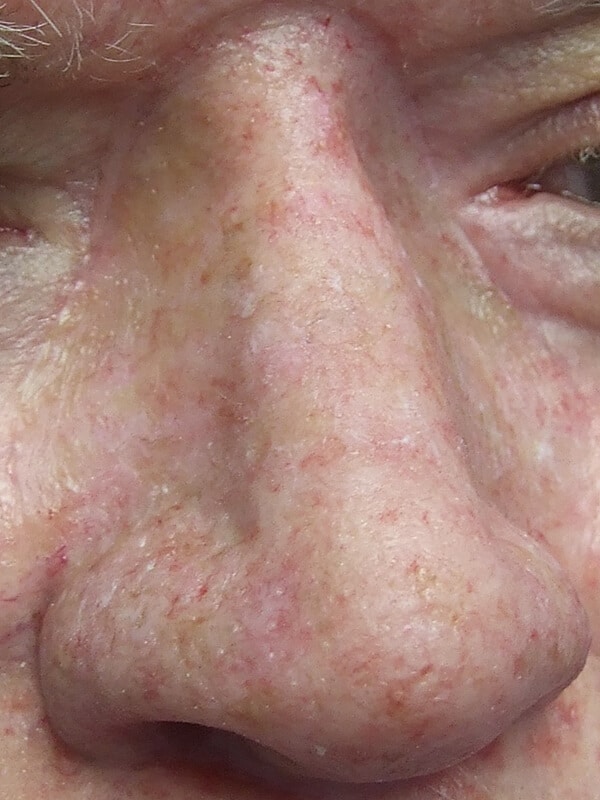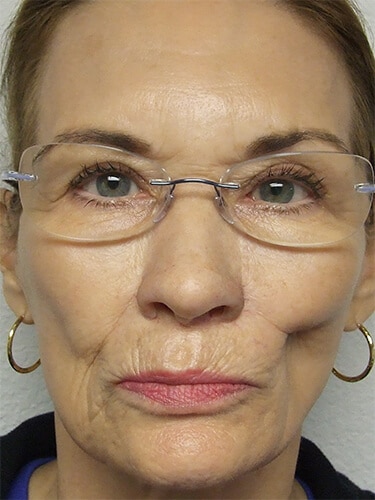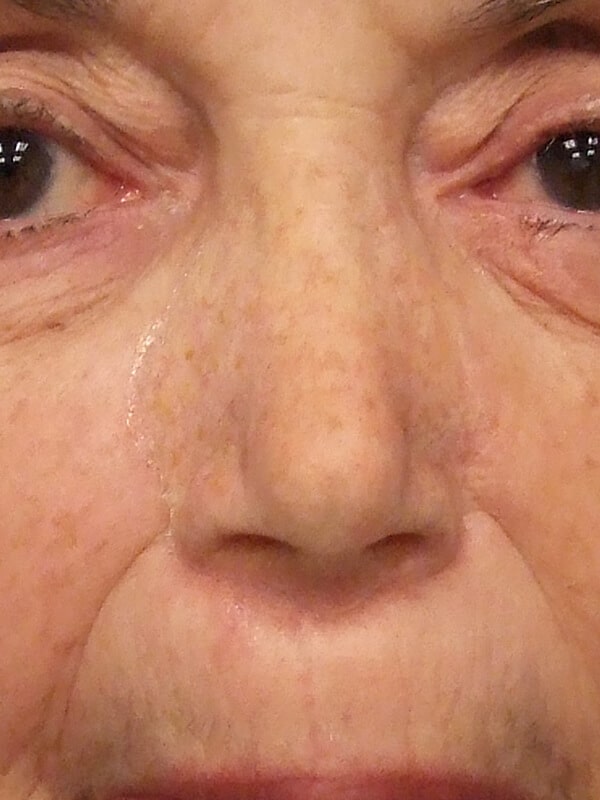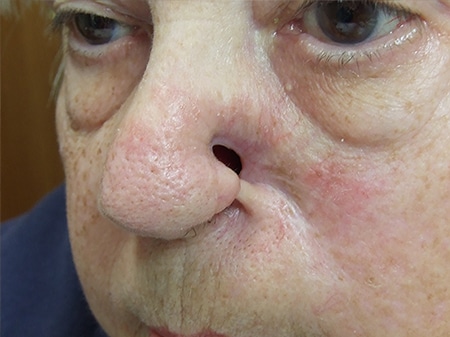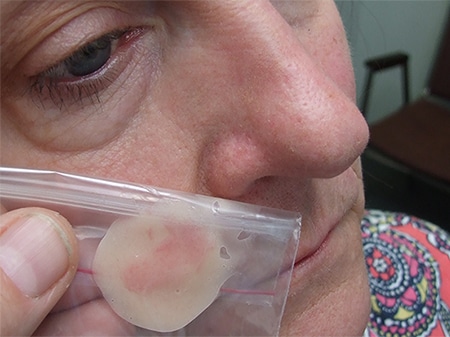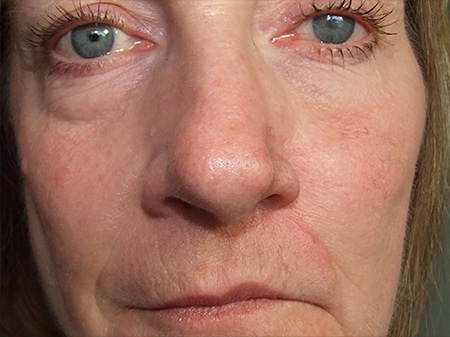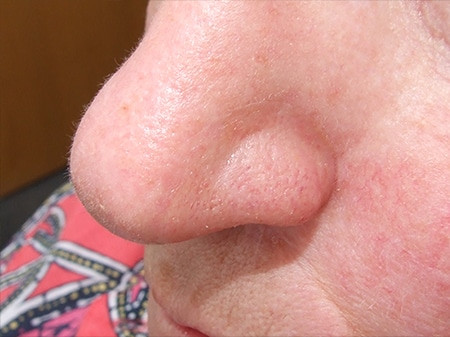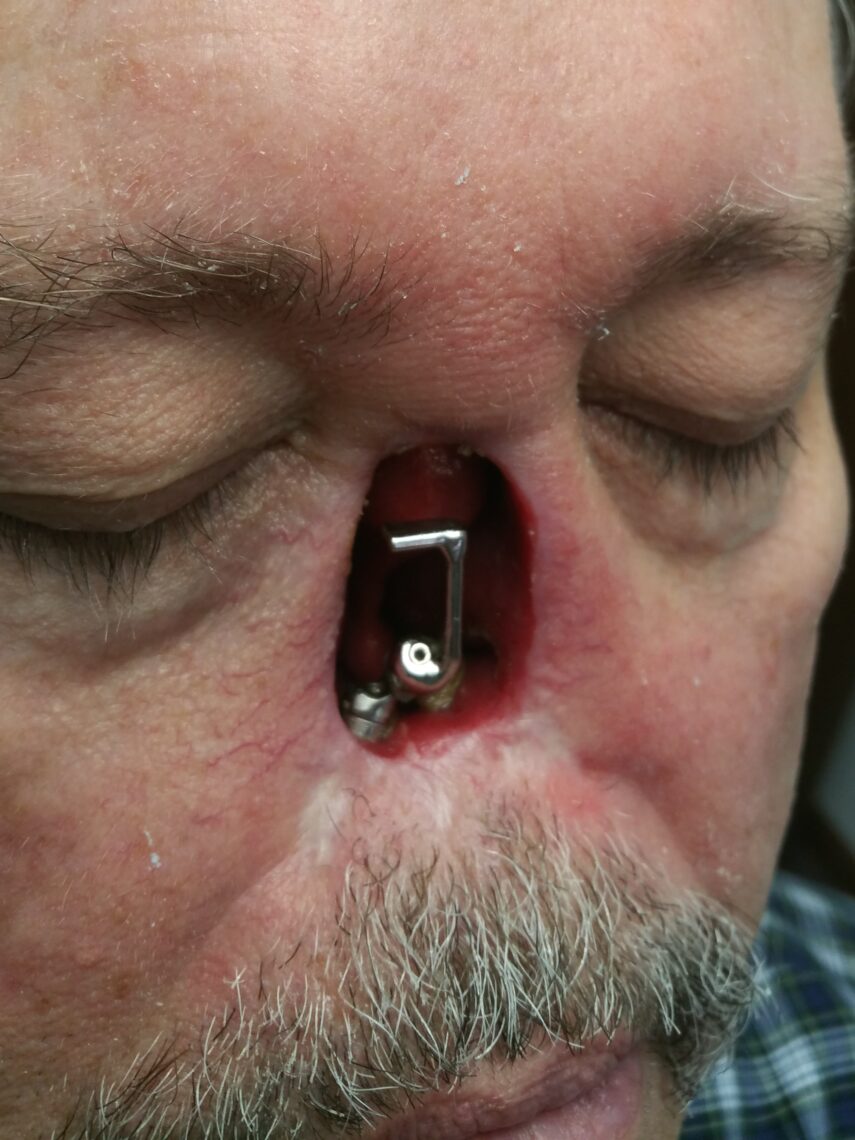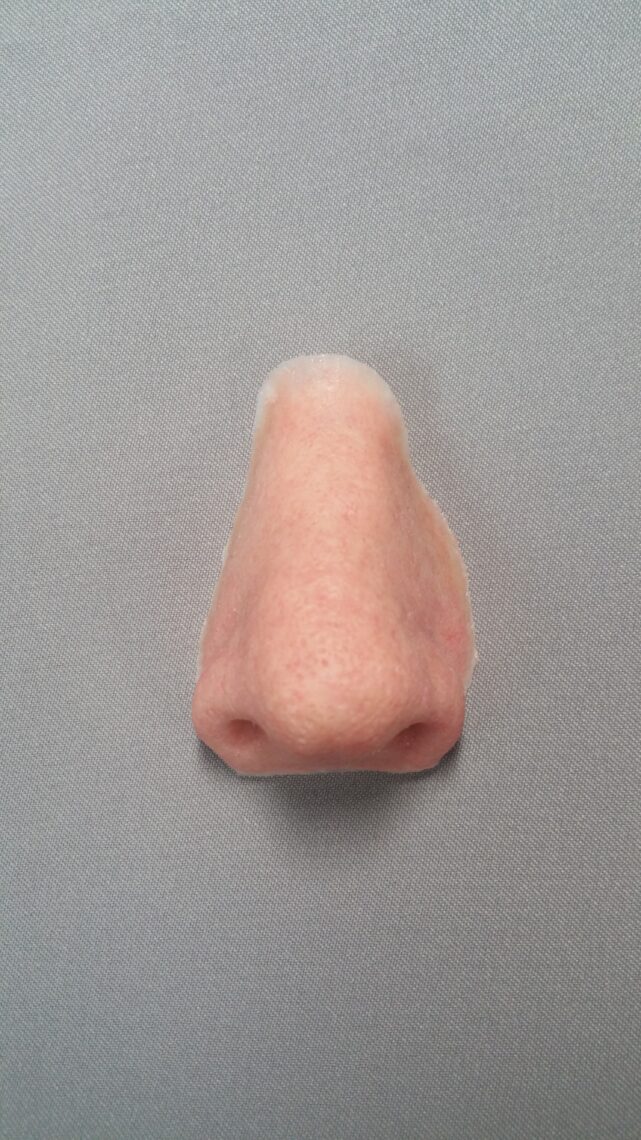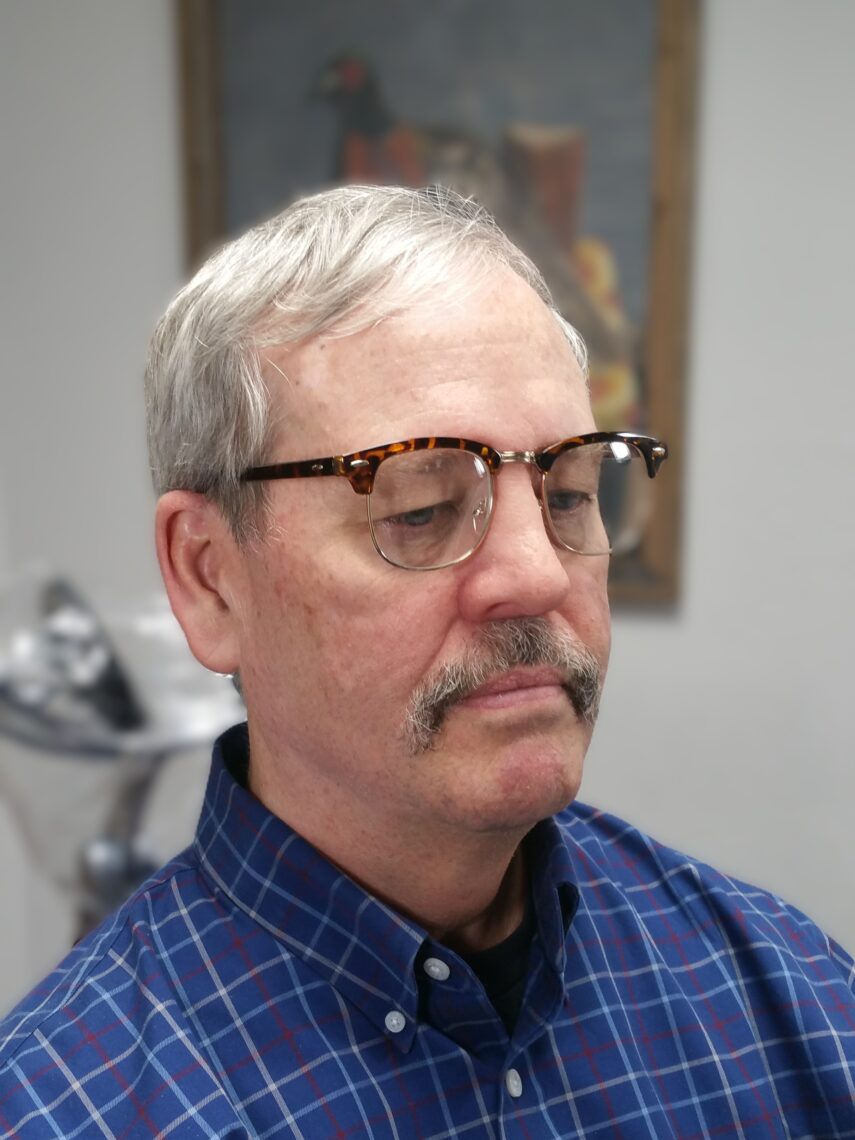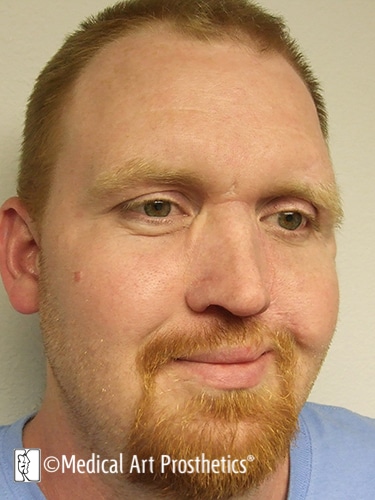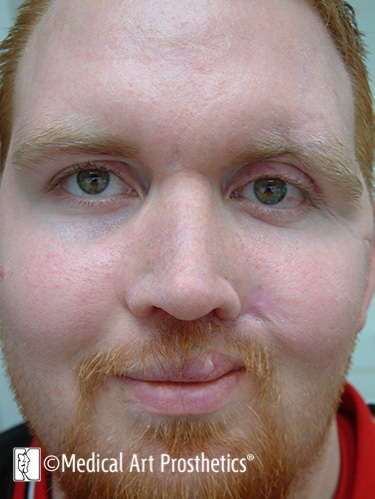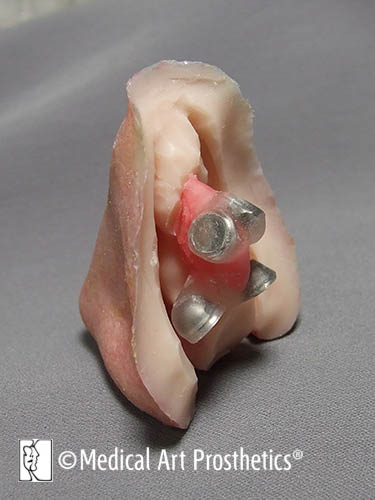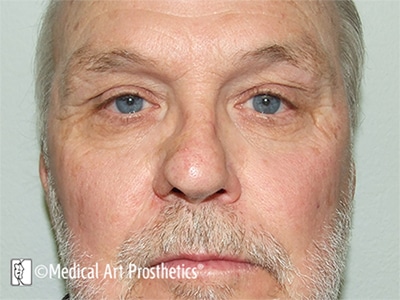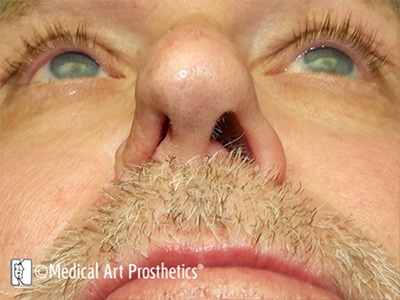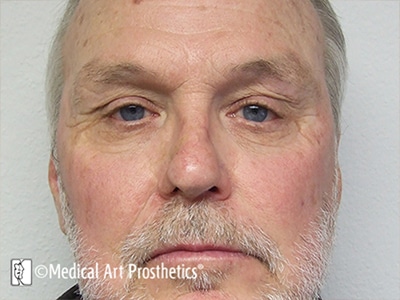Nasal Prosthesis Retainment Options
We are often contacted to provide the lifelike nasal prosthesis after our client has had their nose removed. However, we would be happy to consult with the patient prior to rhinectomy surgery. In this case we can prepare and have ready a hollow lightweight nasal form that can be gently taped into place to cover the area during the post operative healing period.
This helps because the patient has something comfortable and protective to wear almost immediately after surgery. The cover might also reflect the correct size and shape of their nose. After complete healing has occurred we can create the final prosthesis.
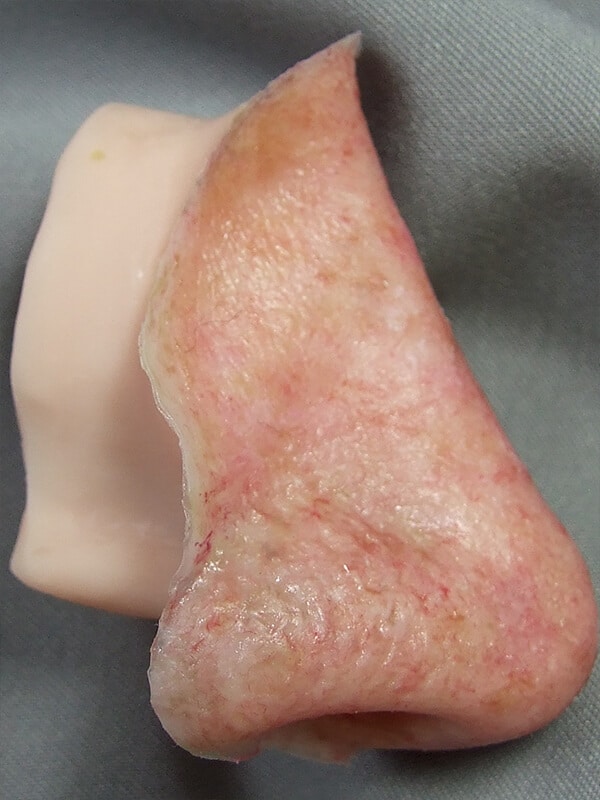
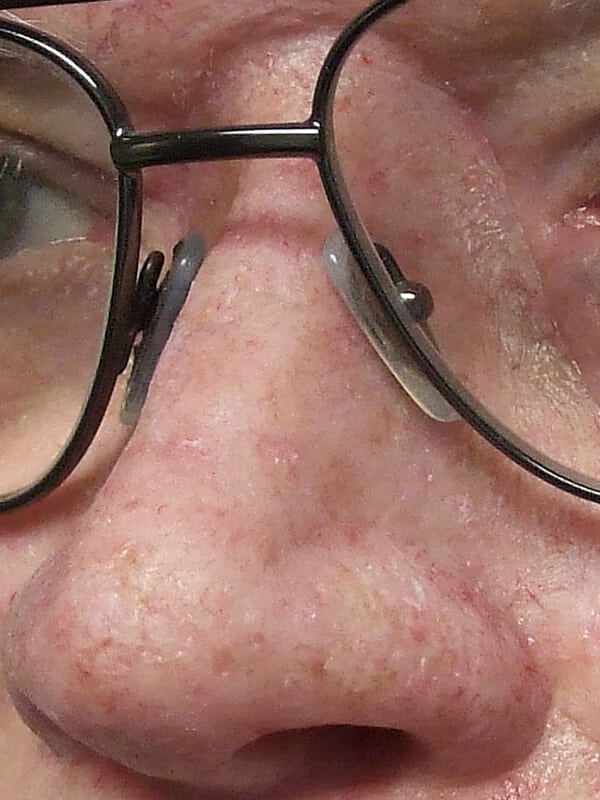
Anatomically-Retained Nasal Prosthesis
Anatomically-Retained Nasal Prosthesis
This client has received an anatomically-retained prosthesis. Selection of the ideal durometer of silicone improves the comfort of the nasal prosthesis while providing secure adhesive-free retention. This patient need only slip his prosthesis into its passively-seated position, put his glasses on, and he is ready for his day.
Of critical importance is that the bulb portion of the prosthesis seat absolutely passively in a very accurately captured exenteration cavity. The bulb walls are generally less than 2 mm in thickness with a mid-low durometer silicone. The technique was painstakingly developed to allow the elderly patient to enjoy their prosthesis without adhesive or fear of tissue trauma.
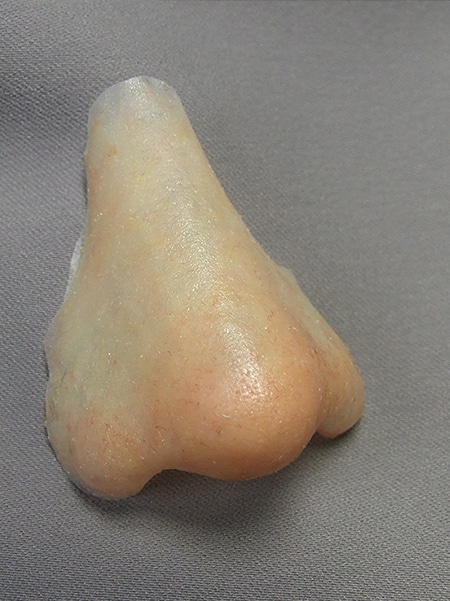
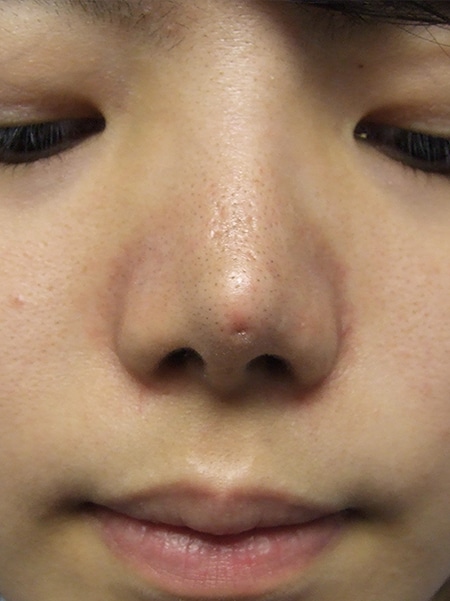
The Cosmetic Cover Nasal Prosthesis
The Cosmetic Cover Nasal Prosthesis
Some of our clients explore the nasal cover option as an exercise. This type of service we offer not as a prescribed medical or prosthetic procedure, but as a cosmetic or theatrical project. For some of our clients it is a necessary step in their journey to thoroughly understand and experience the merits but more importantly the limitations of all non-invasive methods to cover or conceal an area of their nose that is a concern. Our methods employ silicones of several types and consistencies and are modeled for each individual based on over 3 decades of experience.
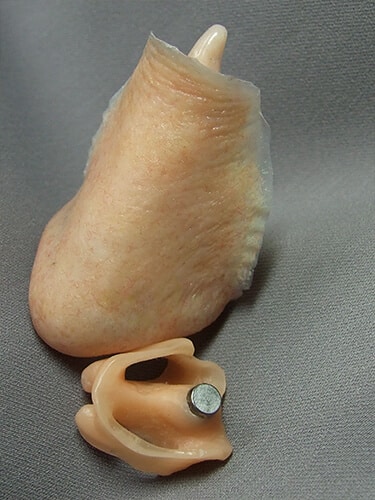
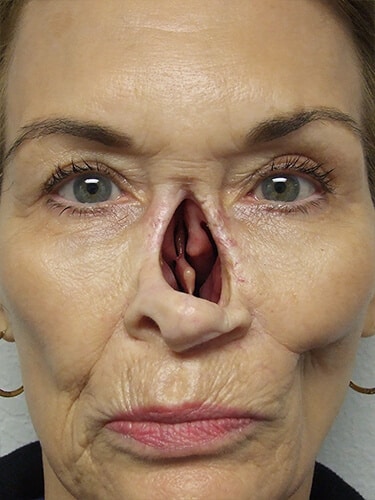
2 Piece Magnetic Nasal Prothesis
2 Piece Magnetic Nasal Prothesis
This patient has undergone devastating ablative facial surgery for the treatment of squamous or basal cell carcinoma, and presents status post subtotal rhinectomy. Again, Medical Art Prosthetics strives to design prostheses with the patient”™s best interest in mind. Fabricating a simple silicone prosthesis would be much easier for us as would wishing the patient well in placing it correctly and cleaning it and their skin of adhesive residues each day. However, our clients know we explore every opportunity to simplify their life with the prosthesis even when it means a more complex design and mold are needed to accomplish this goal.
The patient easily positions a magnetic plastic substructure followed by the aesthetic prosthesis portion that is pulled securely with a little “click” into the correct location.
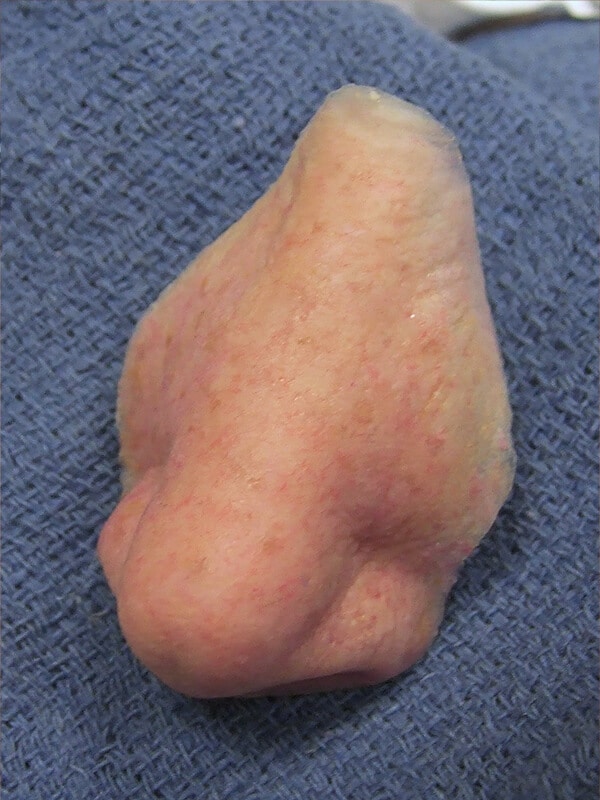
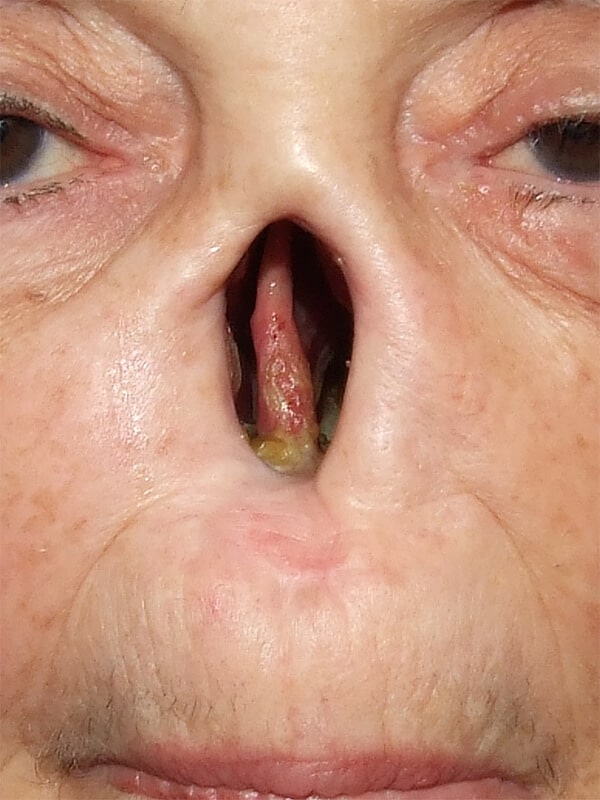
Adhesive Retained
Adhesive Retained
For this patient 2 adhesive strategies were developed to simplify her need to position the prosthesis properly and manage adhesive with minimal cleaning. One of the methods required only a tacky edge adhesive and eyeglasses to stabilize the prosthesis which would allow easy attachment in less than 1 minute.
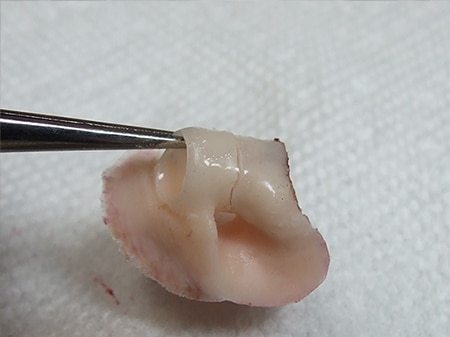
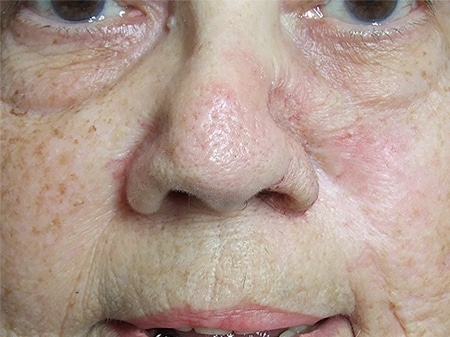
Nasal Stent and Anatomic Prosthesis
Nasal Stent and Anatomic Prosthesis
Even a small defect requires some degree of coverage and even a simple bandage applied each day requires the wearer to answer questions and it continually invites attention. A thoughtfully designed pop-in place prosthesis is technically very challenging to plan and mold, but it frees the wearer from not only stares and questions but the hassle and frustration of working with messy unreliable adhesives.
This prosthesis uses the shape memory and resilience of the silicone material to securely but delicately engage the alar tissue band for easy wear.
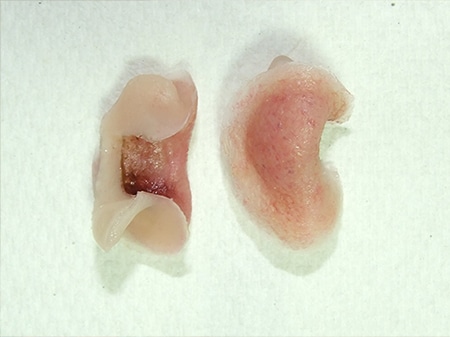
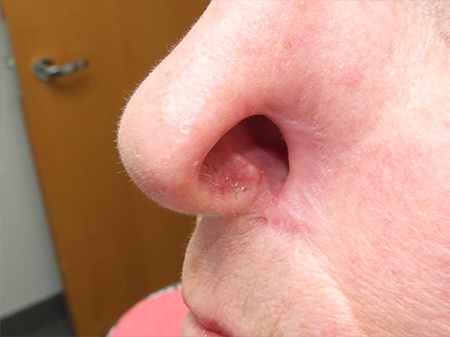
Adhesive-Free Nasal Ala Prosthesis
Adhesive-Free Nasal Ala Prosthesis
The small alar (nasal) prosthesis is designed to be placed by the patient and retained by the anatomical fit. This means that we have taken the time to create the prosthesis with flexible parts that fit gently inside the nose like a puzzle piece so that no messy adhesive is required. Adhesive would fail due to the moisture in the area and the constant shearing forces between the prosthesis and the underlying skin during smiling. This patient can smile all she wants knowing the prosthesis will remain in place blending almost seamlessly as her skin slides freely beneath it.
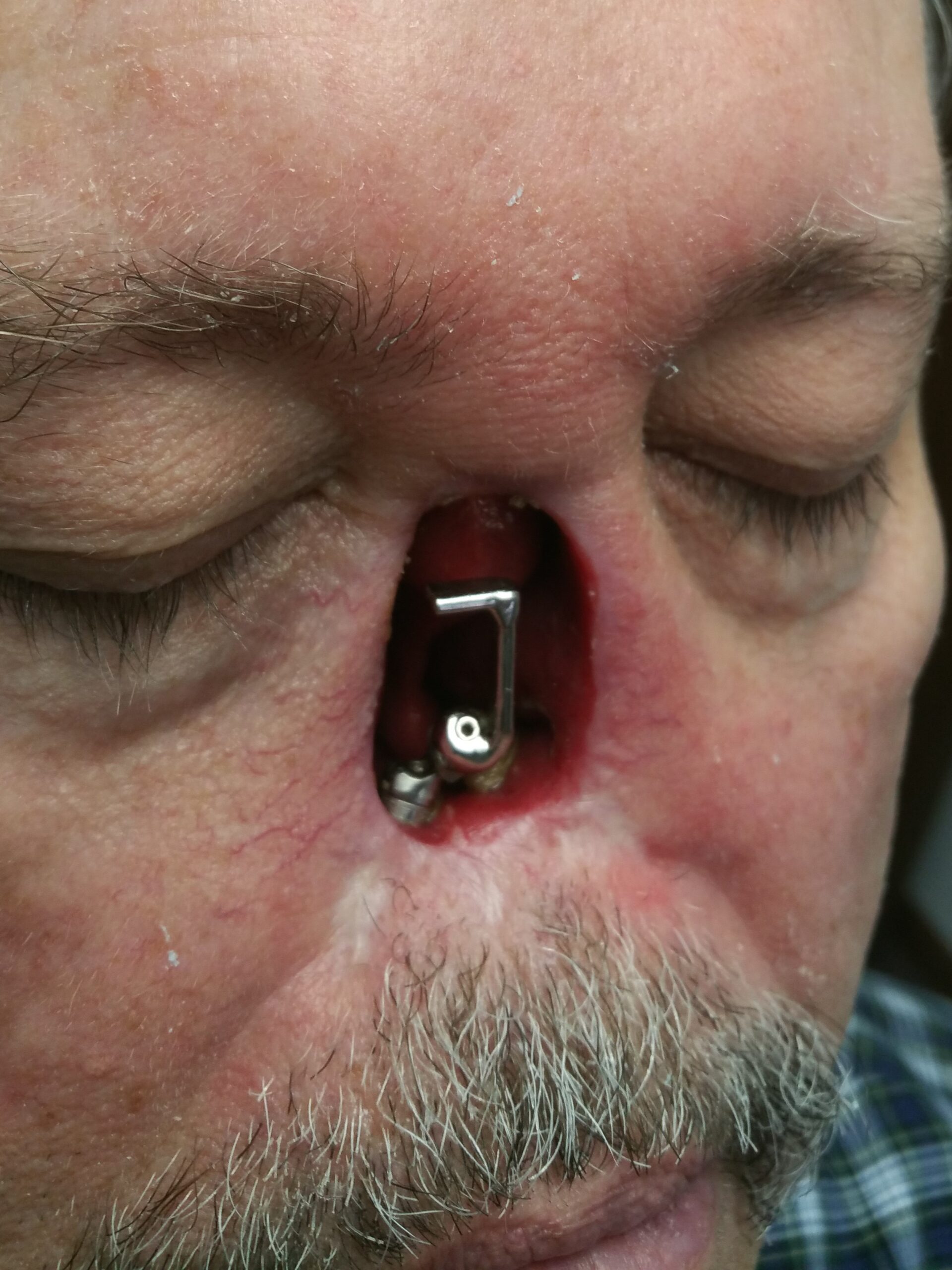
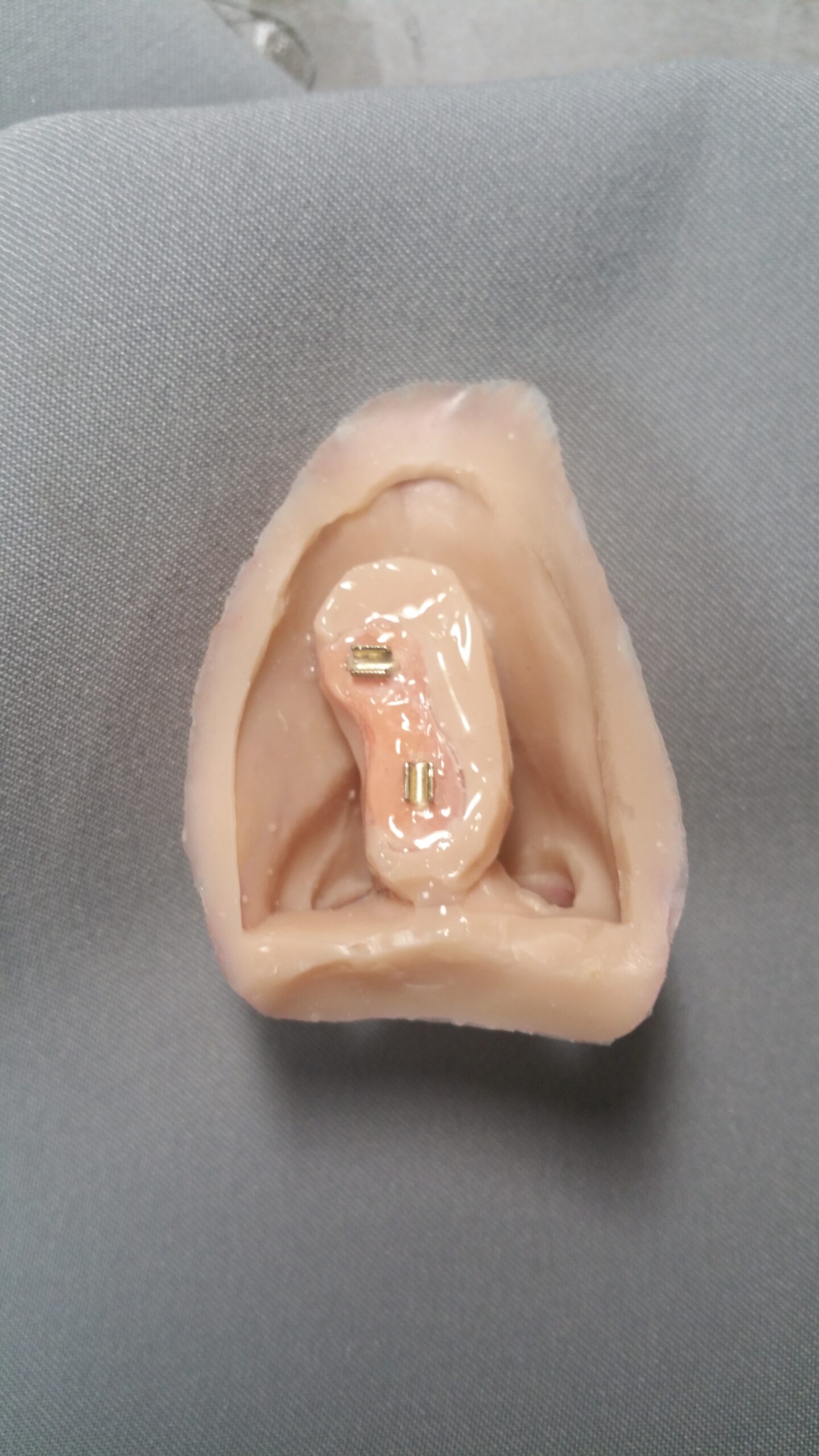
Osseointegration Implant-Retained Nasal Prosthesis (Bar Clip)
Osseointegration Implant-Retained Nasal Prosthesis (Bar Clip)
The bar-clip retention method offers excellent stabilization of the implant-retained nasal prosthesis.
The independent abutment – to – magnet attachments offer several advantages for the stabilization of implant-retained nasal prostheses or the midfacial prosthesis.
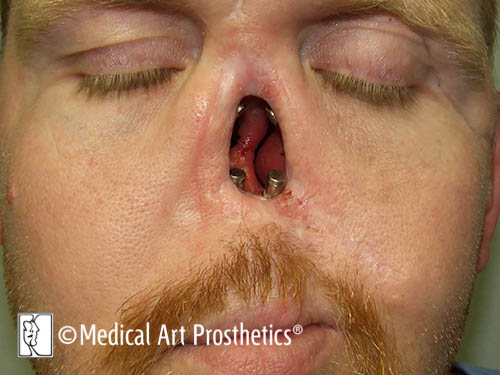
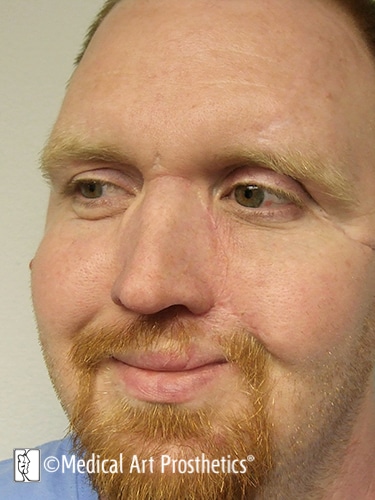
Osseointegration Implant-Retained Nasal Prosthesis (Magnetic)
Osseointegration Implant-Retained Nasal Prosthesis (Magnetic)
Osseointegration has been a highly effective method of retention of the nasal prosthesis or midfacial prosthesis. After consultation with Medical Art Prosthetics and your physician the most appropriate options will become clear. Medical Art Prosthetics has perhaps the longest and broadest experience specifically in implant-retained craniofacial prostheses designed by medical artists in the United States.
If this is a method of choice we may be able to assist in helping our client locate the nearest Vistafix implant surgeon who will be happy to team with in planning treatment. Medical Art Prosthetics has collaborated with Cochlear Vistafix surgeons from across the country, and we have also introduced the Vistafix program to surgeons who now offer the service in conjunction with our anaplastologists.
Our patients like our work and sometimes travel across the country to get a new prosthesis designed.
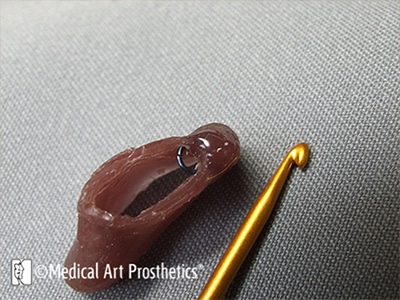
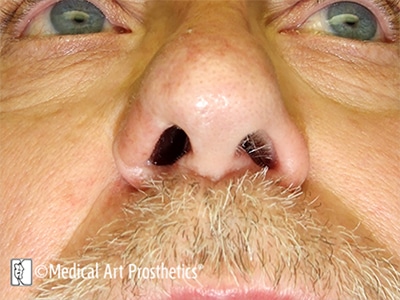
Nasal Stent/Cone
Nasal Stent/Cone
The nasal stent that is custom formed to the patient offers long sought relief from breathing difficulty secondary to nasal trauma or scarring from surgical procedures. Careful shaping and appropriate silicone selection can result in a self-retaining fit of the device that also restores external nasal symmetry and remains undetectable within the nasal vestibule.


